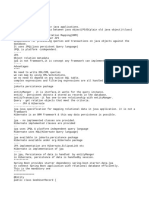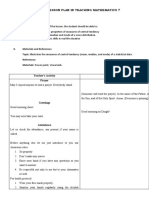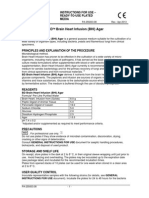0% found this document useful (0 votes)
33 views12 pagesSpring Data Jpa Sample Code 2025
Spring Data JPA is a module within the Spring Data project that simplifies JPA access for database operations, reducing boilerplate code through repository support and built-in methods for CRUD operations. It integrates with various JPA providers like Hibernate and supports features such as custom queries, pagination, and transaction management. The document outlines steps to create a Spring Data JPA application, including setting up the project structure, creating entities, repositories, and controllers, along with example code for managing employee data.
Uploaded by
Prabir KalwaniCopyright
© © All Rights Reserved
We take content rights seriously. If you suspect this is your content, claim it here.
Available Formats
Download as PDF, TXT or read online on Scribd
0% found this document useful (0 votes)
33 views12 pagesSpring Data Jpa Sample Code 2025
Spring Data JPA is a module within the Spring Data project that simplifies JPA access for database operations, reducing boilerplate code through repository support and built-in methods for CRUD operations. It integrates with various JPA providers like Hibernate and supports features such as custom queries, pagination, and transaction management. The document outlines steps to create a Spring Data JPA application, including setting up the project structure, creating entities, repositories, and controllers, along with example code for managing employee data.
Uploaded by
Prabir KalwaniCopyright
© © All Rights Reserved
We take content rights seriously. If you suspect this is your content, claim it here.
Available Formats
Download as PDF, TXT or read online on Scribd
/ 12
























































































